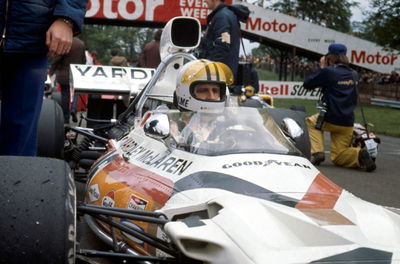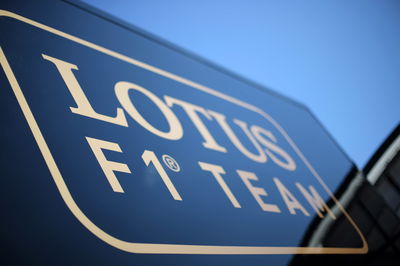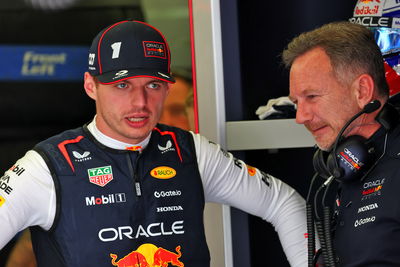In memory of ... Denny Hulme

Denny Hulme is Formula One's forgotten champion; a gruff, burly Kiwi who lived his life as far away from the spotlight as possible. Here, Crash.net puts the enigma of 'The Bear' in focus, profiling the life and times of Grand Prix racing's most reluctant hero.
Ask anyone but the most ardent Formula One fan if they've heard of Denny Hulme, and the answer will invariably be 'who?'. Hulme (pronounced 'Hullm') was the antithesis of swinging sixties style and daredevil playboys, yet took on and beat a field including such legendary luminaries as Jim Clark, Graham Hill, Jack Brabham and Jackie Stewart to win the 1967 World Championship.
FROM THE FARM TO F1
Denis Clive Hulme was a straightforward man, nicknamed 'The Bear', for his broad physique, rugged features and split personality. Denny could be a Pooh or a grizzly, depending on his mood, but he also had a sensitive side, belying his typecasting as a gruff curmudgeon.
So low was his profile though that Hulme was never even the most famous member of his family. His father, Clive Hulme, was one of New Zealand's most decorated World War II heroes, awarded the Victoria Cross after killing 33 snipers in the Battle of Crete.
Raised as a shoeless country bumpkin on a tobacco farm in the untamed New Zealand countryside, Hulme's humble beginnings were an anathema to dreams of a racing career. Although the young Denny had an affinity with vehicles from driving tractors on the farm as a child and combining work for his father's haulage company and a local garage at 17, it wasn't until the age of 21 that he took his automotive aspirations to the track.
Displaying his rural roots, Hulme raced barefoot throughout his fledgling forays into local hillclimbs, gymkhanas and support races, eventually winning the New Zealand 'Driver to Europe' scheme in 1960. Thus, Denny, who had never had any inclination to travel, and his young bride Greeta upped sticks to the other side of the world in pursuit of a life on the circuit.
Even in his early days racing one of Bruce McLaren's old Coopers, Hulme's driving style was set as it would remain throughout his career: nothing fancy, stay consistent, bring the car home in one piece and wait for the opposition to hit trouble in an era of high mechanical fallibility. The tortoise and The Bear.
This no-frills tendency was never better illustrated than by the fact that Hulme scored only one pole position in his Formula One career, at the South African Grand Prix in 1973. No other world champion has so few demonstrations of outright speed on his racing CV. Unlike many of the greats, Hulme also had a lifelong hatred of racing in the wet. He loved to feel in complete control, and was out of his comfort zone when conditions contrived to cloud his confidence in the car.
Hulme's seeming simplicity manifested itself as a single-mindedness that held him back through his early forays in Europe. Denny was determined to succeed, but unwilling to accept offers of help or to 'play the game' to further his career, believing that talent would win out. Despite a burgeoning reputation as a successful Formula Junior racer, Hulme was still racing part-time and working as a barefoot mechanic for Jack Brabham at the age of 26 in 1962.
Hulme's subsequent results in Formula 2, including a win on his first visit to the old Nurburgring in 1964, saw him promoted to the Brabham Formula One team by mid-1965. A strong Grand Prix debut at Monaco was one of the ingredients that convinced Jack Brabham to hire Denny as a full-time works driver for 1966, replacing Dan Gurney after the American's defection to Eagle.
INSTANT SUCCESS
In his first full Formula One season, Hulme not only finished a credible fourth in the championship, but also began to expand his roster of racing outlets, including second place at Le Mans as part of a bungled photo finish for Ford.
1967 would be Hulme's busiest yet, competing in the Tasman series in New Zealand, the Formula One World Championship for Brabham, the Daytona 500, the Indianapolis 500 and the CanAm sportscar championship for McLaren, as well as Formula 2 races on the support card at many Grand Prix weekends. The schedule reflected the spirit of the era, when drivers would drive any and all available machinery, and included a transatlantic jaunt for Indy 500 qualifying during the Monaco GP weekend, between qualifying and the race itself, at which Hulme incredibly took his maiden Grand Prix victory.
The year would culminate with Hulme's greatest achievement, as, with two victories from 11 races, he was crowned Formula One World Champion from Jack Brabham and Jim Clark following a three way title shootout in Mexico. Having brought the car home in the minimum third place required to clinch the championship, the race report in Autocar magazine summed up The Bear's attitude to the accolade: "Jim Clark is surrounded by photographers and receives his trophy from a local beauty queen, but Hulme wanders off along the back of the pits and seems totally unconcerned about his World Championship."
If the Hulme driving style was consistent across the many racing series, so too was his attitude. Denny was well-known for his irritability with the media, twice winning the F1 journalists' 'Lemon Prize' for irascibility. Hulme also dismissed the notion of fitness and dieting, stating that "motor racing is my way of keeping up to scratch." His preference for the low-key, low maintenance and anonymous seemed out of kilter even then, and would be perceived as prehistoric in today's world of personal trainers, dieticians, media training, sponsor obligations and incessant press attention.
However, although Hulme may have given off the appearance of being unconcerned, his taciturn exterior belied the occasional indulgence for sentiment. National pride and recognition for his achievements were important to Denny, and he was always keen for his achievements to be acknowledged (with a minimum of fuss of course). To this end, Denny was delighted to win New Zealand's Sportsman of the Year Award in 1967, although this would be The Bear's only domestic accolade during his lifetime. Hulme remains New Zealand's only F1 World Champion, but he competed during a golden age of Kiwi racing, and always enjoyed the sense of 'us against the world' camaraderie he felt with his Grand Prix compatriots Chris Amon and Bruce McLaren.
THE MCLAREN CONNECTION
McLaren particularly cast a spell over Hulme, and The Bear conducted an open affair with Bruce's outfit through the second half of 1967. Hulme finished as runner-up to Bruce in the 1967 CanAm championship, but the two found a mutual affinity that would translate to the new champion lining up in the Kiwi racing orange of McLaren for the 1968 season.
Hulme's F1 title defence went to the final race of the season, but this time he was on the wrong end of a Mexican standoff, losing out to Graham Hill and Jackie Stewart after succumbing to a suspension failure. A consolation prize followed swiftly though, as Hulme won his first CanAm title the following weekend, the McLarens sweeping the sportscar series in dominant style.
Sportscars were to prove the backdrop of Hulme's mid-career success, but his second CanAm title in 1970 was won against a tragic backdrop.
Firstly, Hulme suffered horrific burns in a fire at Indianapolis after his leather gloves melted on to his hands when a petrol cap ignited mid-lap. Typically, Denny dealt with his injuries in stoic fashion, and his only concern was when he could get back behind the wheel.
However, weeks later, Hulme's team-mate and team leader Bruce McLaren was killed testing the latest McLaren CanAm at Goodwood. When the news came through, The Bear, hands still swathed in thick bandages, broke into a rare outpouring of primal emotion. Hulme raced in an era when death stalked the track at every turn, yet the passing of his countryman, friend and multi-series team-mate hit Denny especially hard. Rushing back to racing despite his injuries restricting him from putting on racing gloves or even holding the wheel properly, Hulme resolved to win the CanAm series 'for Bruce' - and duly delivered.
Hulme continued to race competitively for McLaren in Formula One and CanAm, now alongside Peter Revson, with an Indian summer season in 1972 seeing The Bear finish third in the F1 World Championship and second in his final CanAm campaign.
Hulme bowed out from Formula One in 1974, finishing a distant seventh in the championship as new team-mate Emerson Fittipaldi swept to the title in the first season of the iconic McLaren Marlboro partnership. The Bear had already professed to losing his desire for close quarters racing after flipping a CanAm racer in 1972, citing a lack of trust in evolving aerodynamics, but it was the death of his prot?g? Peter Revson that convinced Hulme the time was right to hang up his helmet.
LIFE AFTER F1
Post-Formula One, Hulme and his family withdrew to New Zealand, settling in remote Tauranga. Hulme's biographer, Eoin Young, said of The Bear that he often gave the impression that race weekends got in the way of his lawnmowing, so it was no surprise that he was to be found doing voluntary oddjobs in his new community less than two years after retiring from Formula One. The semi-retirement years were hard on Hulme's family though: his thirty year marriage to Greeta collapsed after their son Martin was killed in a diving accident, and Denny left Tauranga to take up home with Sandy Myrhe, a motoring journalist from Auckland.
Despite his withdrawal from Formula One, the racing bug never left Hulme, and he undertook a successful international Touring Car career through the late 70s and 80s, as well as brief forays into truck and stock car racing in his native New Zeland.
It was this later penchant for tin tops that would see Hulme fatefully race in Australia's iconic Bathurst 1000 in October 1992, at the age of 56. The Bear would become the first F1 World Champion to die of natural causes on the Mount Panorama circuit; a heart attack behind the wheel in the wet conditions Hulme always hated leading to his BMW M3 trundling gently to a roadside halt. Denny Hulme was dead before the medics reached him; a born racer meeting his fate, as so many of his contemporaries had done, on the circuit.
Hulme died still bearing a chip on his shoulder about a perceived lack of credit for his career, especially in New Zealand. It was the great Hulme paradox, befitting of his split Pooh/grizzly personality: desperate to be given credit for his achievements, but unwilling to spend any time in the spotlight to accept the adulation. A posthumous induction into the New Zealand Sportsman's Hall of Fame in 1993 was perhaps an apt footnote to bind together this contradiction.
The great champions though are defined not only by statistics, but by personality, charisma and memories passed down as anecdotal legend. Hulme's 'shutters up' reluctance for life in the limelight was so effective that he seemingly wrote himself out of Formula One's collective consciousness. To this day, The Bear remains a curious enigma, an anomalous question mark on the pages of racing history.
Stories of most sporting heroes conclude with a line about how they'll never be forgotten, but Denny Hulme's legacy remains a battle to be remembered in the first place.











